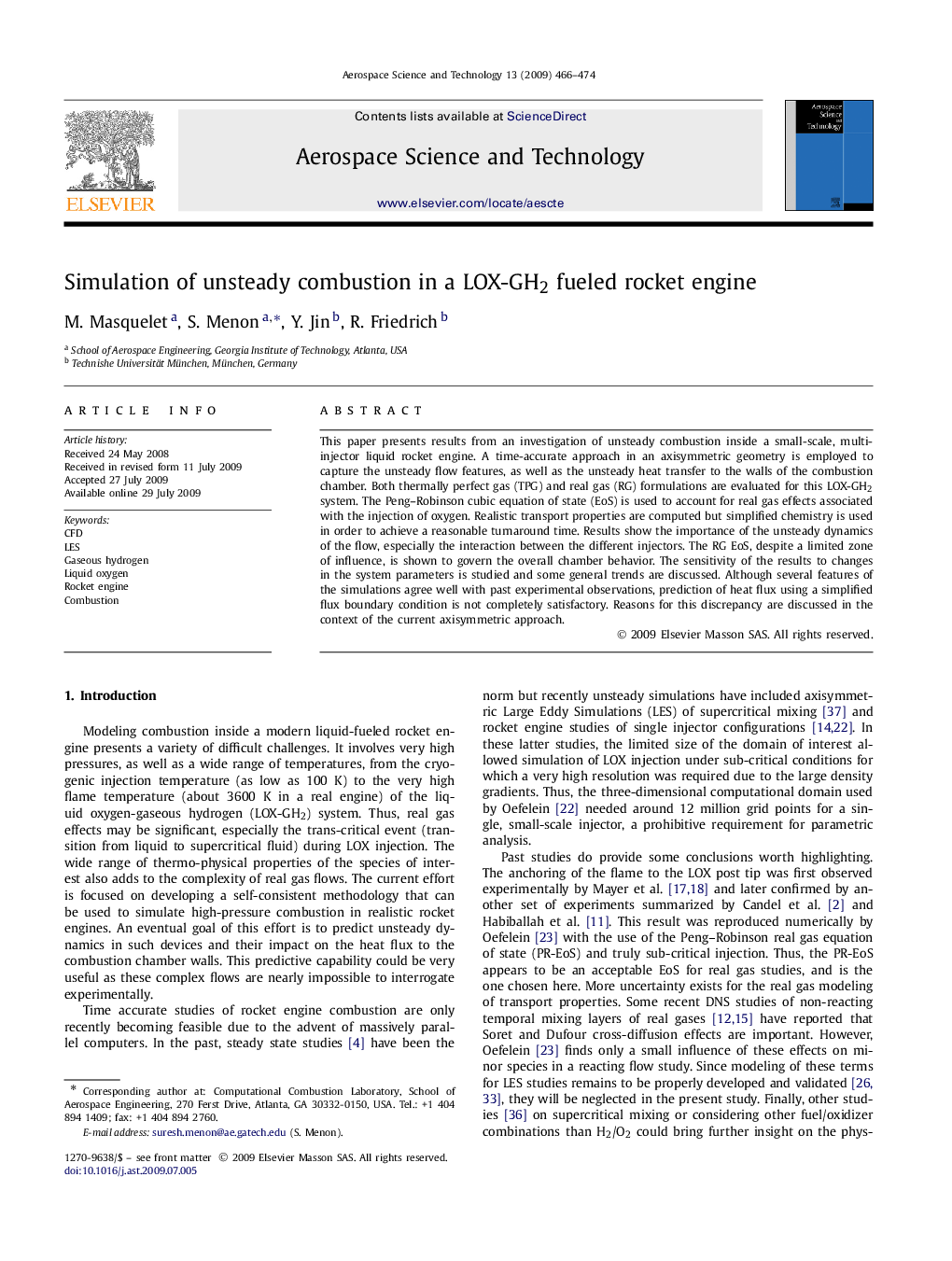| Article ID | Journal | Published Year | Pages | File Type |
|---|---|---|---|---|
| 1718863 | Aerospace Science and Technology | 2009 | 9 Pages |
This paper presents results from an investigation of unsteady combustion inside a small-scale, multi-injector liquid rocket engine. A time-accurate approach in an axisymmetric geometry is employed to capture the unsteady flow features, as well as the unsteady heat transfer to the walls of the combustion chamber. Both thermally perfect gas (TPG) and real gas (RG) formulations are evaluated for this LOX-GH2 system. The Peng–Robinson cubic equation of state (EoS) is used to account for real gas effects associated with the injection of oxygen. Realistic transport properties are computed but simplified chemistry is used in order to achieve a reasonable turnaround time. Results show the importance of the unsteady dynamics of the flow, especially the interaction between the different injectors. The RG EoS, despite a limited zone of influence, is shown to govern the overall chamber behavior. The sensitivity of the results to changes in the system parameters is studied and some general trends are discussed. Although several features of the simulations agree well with past experimental observations, prediction of heat flux using a simplified flux boundary condition is not completely satisfactory. Reasons for this discrepancy are discussed in the context of the current axisymmetric approach.
